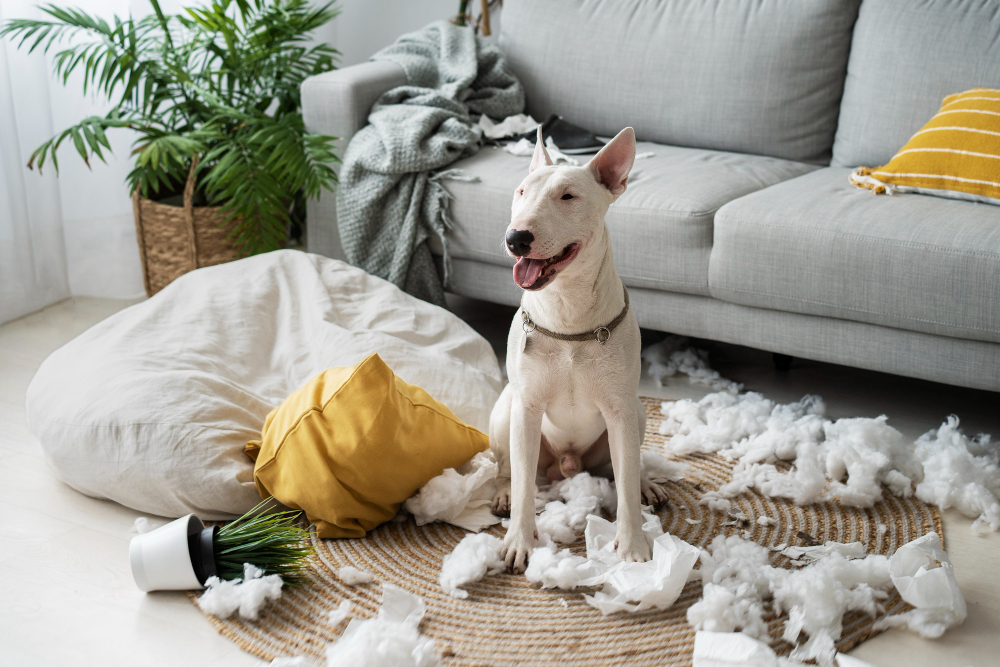Understanding a dog’s natural instincts when it comes to playtime is essential for dog owners, especially when their pets seem to have a penchant for destroying toys. Many owners worry about the implications of this behavior and seek answers to questions such as: Do dogs grow out of destroying toys? Is it normal for dogs to rip their toys? At what age do dogs stop destroying toys? And how do I get my dog to stop shredding toys? This article aims to address these concerns and provide guidance on managing a dog’s toy-destroying tendencies.
The Instinctual Need for Destruction: Is it Normal for Dogs to Rip Their Toys?
Dogs, by nature, have a strong inclination to destroy toys, particularly stuffed ones. This behavior is rooted in their ancestral predatory instincts, where playtime serves as a means of honing their hunting skills. As a result, tearing apart toys simulates the act of catching and dismembering prey, which is a normal part of a dog’s instinctual drive.
The Age Factor: At What Age Do Dogs Stop Destroying Toys?
There isn’t a specific age at which all dogs stop destroying toys, as this behavior varies depending on the individual dog’s temperament and breed. However, many dogs tend to become less destructive as they mature and their energy levels decrease. It is important to remember that some dogs may never completely outgrow their destructive tendencies, and owners must learn to manage these behaviors through proper training and toy selection.
The Dark Side of Toy Destruction: Dangers of Dogs Eating Stuffing from Toys and House Destruction
When a dog eats stuffing from a toy, it can pose a risk to their health. The ingested material can cause intestinal blockages, leading to severe health complications and, in some cases, even death. It is essential for owners to supervise playtime and ensure that damaged toys are removed and replaced promptly.
Moreover, toy destruction can escalate to more severe issues, such as a dog destroying the house. In these cases, the dog’s destructive behavior may stem from underlying issues such as separation anxiety, insufficient mental stimulation, or lack of exercise.
Finding the Right Toys for Your Dog
Bear Dog Stuffed Animals & Plush Toys: A Solution for Dogs Who Love but Destroy Stuffed Animals
For dogs who love stuffed animals but can’t resist tearing them apart, bear dog stuffed animals & plush toys offer a solution. These toys are designed specifically for dogs, providing them with the comfort and appeal of a soft toy while being more durable than traditional plush toys.
When choosing toys for a dog that loves to destroy them, it’s crucial to select options that are made from sturdy materials and can withstand rigorous play. Some examples of durable alternatives include:
- Rubber chew toys
- Rope toys
- Tough, multi-layered fabric toys
Training and Prevention: How to Get Your Dog to Stop Shredding Toys and Minimize Destructive Behavior
To curb your dog’s penchant for destroying toys, consider implementing the following training techniques and preventive measures:
- Provide regular exercise and mental stimulation: Ensure your dog gets enough physical activity and mental challenges to keep them engaged and prevent boredom-induced destruction.
- Teach your dog the “leave it” command: Train your dog to release a toy when instructed, preventing them from continuing to destroy it.
- Rotate toys: Regularly switch out your dog’s toys to keep them interested and less focused on destroying a single item.
- Use positive reinforcement: Praise and reward your dog when they play appropriately with their toys, encouraging a more gentle approach to playtime. 5. Supervise play sessions: Keep a watchful eye on your dog during playtime, intervening when necessary to prevent excessive toy destruction.
- Offer appropriate chewing outlets: Provide safe and appropriate chew toys to help satisfy your dog’s natural urge to chew and reduce their interest in destroying other toys.
- Address underlying issues: If you suspect that your dog’s destructive behavior may be linked to separation anxiety, boredom, or lack of exercise, take steps to address these issues by consulting a veterinarian or professional dog trainer.
Conclusion
In conclusion, while it’s normal for dogs to destroy toys to some extent, excessive destruction can pose risks to their health and well-being. By understanding the underlying causes of this behavior and implementing the proper training techniques, toy selection, and preventive measures, dog owners can manage their pets’ destructive tendencies and provide them with a fun and stimulating playtime experience. With a combination of patience, perseverance, and the right approach, it is possible to minimize the damage caused by dogs who love to destroy their toys while ensuring their safety and satisfaction.

